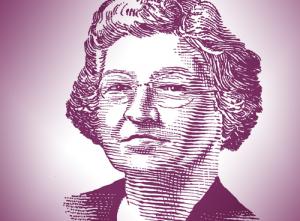Edith Clarke
Susan Craig is Director, Media Relations, Corporate Communications for the New York Power Authority. Steve Mitnick is the executive editor of Public Utilities Fortnightly.
The electricity industry experienced explosive growth in the Roaring Twenties. But it also faced an almost existential problem. Electrical engineers didn't know how to design alternating current transmission lines that would extend for more than two hundred miles and to reliably transfer the greater amounts of power over distances that were being demanded. The methods they were using assumed the lines had negligible length and amounts of power. So, they weren't up to the task of developing the interconnected grid across our vast continent.

Until Edith Clarke came along. Clarke was our industry's first female electrical engineer. Fresh from earning her master's in electrical engineering from MIT, arguably the only person on the planet who truly understood the complicated mathematics of alternating current created by the so-called Forger of Thunderbolts, Charles Steinmetz, she introduced the Clarke Transform in 1926. The Clarke Transform singlehandedly revolutionized the grid's design and is, to this day, an important tool in developing the smart grid.
Two enthusiasts of everything Edith Clarke — NYPA's Susan Craig and PUF's Steve Mitnick — got together recently to talk about Clarke's breakthroughs and how she inspires us today. Their conversation is excerpted herein.

